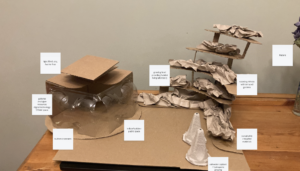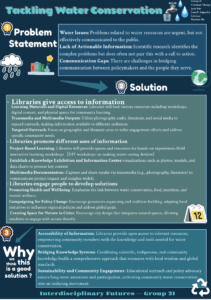Over the past two months, I have observed an interesting and profound phenomenon in this course: the differences between Chinese and Western thinking patterns. Through group collaboration and classroom interaction, I have gained a deep understanding of these differences, particularly in terms of project design and collaboration methods. Today, I would like to share my observations and reflections on Chinese and Western thinking patterns during this process.
In the group collaboration in the Interdisciplinary Futures class, our project theme was to solve social and environmental problems related to water resources through innovative ways. We discussed this topic, and I came up with some insights that I recorded in writing. To my surprise, Coleman made a model of water resource management. This model was not just a theoretical demonstration, but a concrete operational model. Through his own hands and actual operation, he showed how to solve water resource problems through practice. This made me think about whether the purpose of writing assignments is to solve theoretical problems or to complete tasks assigned by teachers. Perhaps I have never understood the true purpose of completing assignments.

Model made by Coleman
This also led me to think about the differences between Chinese and Western thinking patterns. The obvious conclusion is that Western thinking emphasizes practical operation and case studies, while Chinese thinking emphasizes thinking and theoretical analysis. Take a simple example: English is the second most widely spoken language in the world, yet Chinese children start learning it from a young age but are not particularly proficient in English communication. Why is that? It is because the traditional English teaching model in China emphasizes grammar, vocabulary, and test-oriented learning, with students memorizing vocabulary and grammar through rote learning, while neglecting oral communication practice. In contrast, English learning in Western countries places greater emphasis on interaction, practical application, and using language in real-life contexts.
Additionally, collaborating with peers from diverse fields has expanded my thinking. When perspectives from cultural heritage, public policy, and education converge, I realized how expansive thinking can be. I thoroughly enjoyed the group collaboration process!

Team achievements


Leave a Reply